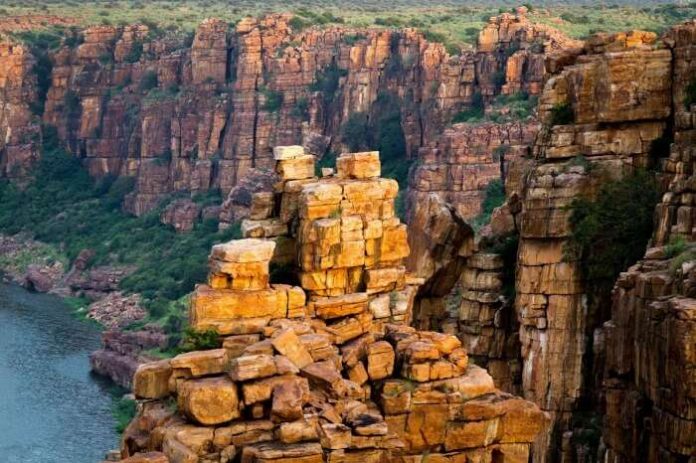This article has been written by Amrita Dasgupta, pursuing a Diploma in Advanced Contract Drafting, Negotiation, and Dispute Resolution from LawSikho.
Table of Contents
Introduction
“Adopt a Heritage: Apni Dharohar-Apni Pehchaan ” is an incredible project started by the Government to develop and uphold the tourism aspect of the historical monuments across India. This is a government-driven project with an intention to nurture the rich cultural heritage of India thereby glamourizing the tourist destinations with technological advancement and development of tourist amenities in such premises. This shall in disguise attract tourists from all over India and abroad and shall give momentum to economic expansion.
The project demands invitation or expression of interest from private or public sector companies to join as “Monument Mitras” and work towards the enrichment and enhancement of quality, facility, and amenities of the monuments. The companies which shall be the successful bidders from the list of applicants shall sign a Memorandum of Understanding (MoU) with the Ministry of Tourism, Ministry of Culture, Archeological Survey of India (ASI), and any other concerned stakeholder to determine and sever the areas of work.
The corporate giant, Dalmia Bharat Limited, which has a significant market presence and is one of the fastest-growing organizations in India, has signed a Memorandum of Understanding (MoU) for adopting Gandikota Fort.
MoU is basically the locus where two or more parties negotiate and consent to the terms for an agreement. It may be bilateral or multilateral and is usually seen in international treaties or high stake business negotiations. Though it is not a legally binding document, it indicates or communicates that a binding contract is in the pipeline.
This article shall articulate the basics of the clauses included in the MoU signed between the parties for the adoption of Gandikota Fort.
Monument Mitras
Monument Mitras are the ones who are shortlisted and selected for the performance of maintenance of the heritage sites. It can either be a private or public limited company, or NGOs or individuals.
With the process of selection of tourist places, submission of interest to adopt, shortlisting of the potential candidates from such list, bidding and then finalizing the shortlisted candidates and/or organizations; “Monument Mitras” shall emerge. Prior to the shortlisting of the final list, the tag of “Monument Mitras” shall not be used.
Process of the project
The selection of “Monument Mitras” shall be as per the following process :
- Expression of interest
The proposed Monument Mitras shall submit their proposal and show their expression of interest after the selection of a heritage site. The sites are being designated with green. Blue and orange colors based on their tourist visibility.
Green signifies high visibility, Blue denotes medium visibility and Orange symbolizes low visibility. In case a company has picked up a green site, then the company mandatorily has to select either one blue or orange site along with that. No rule has been imposed in case a company has selected a blue or orange site.
- Letter of intent
Shortlisting shall be done by the Oversight and Vision Committee, and a letter of intent shall be shared with the shortlisted ones.
- Vision bidding
The proposed Monument Mitras who have received the letter of intent is required to share their vision for the advancement of the basic and advanced amenities for their selected sites thereby amplifying the premise. This is the crucial and extremely competitive segment, where the Vision committee shall base on the vision of the Monument Mitras, decide their selection. The selection would be done on two (2) parameters, one of which is existing situation analysis and vision development.
Existing situation analysis includes the analysis of the funds with respect to the amenities, the prioritization of development of amenities, and trend analysis and projections w.r.t. tourist footfall. Vision development includes sustainability, balanced growth in tourists, operation, and maintenance and implementation plan.
Basics of MoU signed with Dalmia Bharat Limited
A quadripartite MoU has been signed between Dalmia Bharat Limited (hereinafter referred to as “Company”) and Ministry of Culture, Archaeological Survey of India, and Ministry of Tourism on 13th April 2018 in presence of K. J. Alphons, Minister of State for Tourism (Independent Charge), Government of India, and other senior officials of Ministries of Tourism & Culture and ASI, as per a company’s release. This MoU has segregated the responsibilities of managing, operating, and renovating the heritage into four (4) sections.
The company has adopted the heritage monument as one of its corporate social responsibility initiatives and shall provide induction of tourism facilities and/or amenities in the premises. As per the MoU, the company shall prepare and present the comprehensive plan to thrive on the beautification of the premises within 30 days of signing and executing the MoU.
The company shall in every way ensure that the developments in place do not derange the aesthetic value of the Fort, and shall collaborate with the “Oversight and Vision Committee” for approval with respect to placement, size, and content of signage of plaques.
The following are the basic clauses included in the MoU –
- Financing and scheduling
This clause discusses the financing for the activities, operation, and maintenance of the Fort by the company, without generating and/or collecting any fee from the public. Further, this clause confirms that the company shall ensure adequate funding has been provided for the maintenance of the monument and shall continue to fund for a consecutive 5 years.
This section also explores the other side of the coin whereby revenue shall be collected and/or generated from the public, the company ensures that such revenue shall be utilized for the escalation of the amenities.
- Duration of MoU
As per the MoU, the agreement to adoption shall be for a period of 5 years from the date of execution of the MoU, further extendable for a period of 5 years, on the basis of the recommendation of the “Oversight and Vision Committee”.
- Reasonability of rates and standard of services
This clause discusses the standard of services to be maintained by the company and that a dedicated account shall be opened for the maintenance and operation of the monument. This dedicated account shall have the complete funding amount including the interest amount, any revenue generated from the commercial activities with respect to the Fort as approved by Oversight and Vision Committee, and any surplus revenue amount after the completion of 5 years, shall be deposited in the project. Later, in case the association with the company has not been extended, then all the funds shall be transferred to the Archaeological Survey of India. This section also mentions the quarterly audit of this dedicated account. Further, it has been agreed upon that the legal status of the monument shall be vested with ASI itself.
- Management structure
This clause is a detailed structure of the committees and their responsibilities with respect to the project. The committees and their roles shall also be discussed as under:
- Oversight and vision committee
This committee shall oversee the operations, planning, and execution of the sites, select and shortlist the Monument Mitras, and has the power to terminate Monument Mitras based on non-compliance or breach of any clauses of MoU and incomplete documents.
2. Implementation committee
This committee shall guide the Monument Mitras w.r.t. getting clearances, NOCs, and approvals, and shall coordinate with the Ministries w.r.t. progress of the project.
3. Monument committee
This committee assists in the implementation, operation, and maintenance of heritage sites.
4. Monument Mitras, and
Prepare the vision bidding document for heritage sites, ensure the approvals and submit monthly progress reports.
5. Project management consultant
Coordinate with Monument Mitras and committees.
- Force Majeure
This section is a mandate in every project-related agreement and/or MoUs. It explains the consequences or possibilities where the flux of the project has stalled due to some impossible or beyond expectation circumstances.
The other mandatory clauses included in the MoU are :
- Termination
- Dispute Resolution
- Governing of law jurisdiction
- Indemnity
Amenities to be looked into by the company
There is a list of amenities to be maintained or installed by the company. These include the basic amenities and advanced amenities.
Basic amenities bewitches the tourists, as it appeals with the cleanliness of the premise; toilet facilities; wheelchair facilities for the differently-abled persons, drinking water facilities; signages; installation of benches, dustbins, wi-fi, app-based guide; induction of cashless counter facilities i.e. point of sale terminal machines at ticketing counters, etc. Advanced facilities promote economic expansion by including installation of snack counters; shops boosting the local art and craftsmanship; night visit facilities as per the nodal guidelines; insertion of advanced surveillance systems like CCTV, night vision camera, etc; digital screening; light and sound shows, battery-operated vehicles, etc.
Conclusion
Though this move by the Government has been severely criticized, this has established the importance and maintenance of the heritage buildings across India. Dalmia, being one of the most promising companies, shall continue to uphold the tourism aspect of Gandikota Fort thereby increasing the probability of tempting more tourists to visit the site.
Public and private companies, NGOs, and other businesses shall be encouraged to take up these projects or apply for these projects in order to enhance our cultural sites keeping in tune with the art and culture of such sites.
Why are MoUs signed for such projects? It is one of the best ways to segregate the responsibilities and roles of the parties to this MoU and also for the fact that MoU is not-so-complicated and easier to execute. Only the important clauses are being drafted in this MoU, unlike other legal documents.
References
- https://www.prnewswire.com/in/news-releases/dalmia-bharat-limited-ministry-of-tourism-and-archaeological-survey-of-india-sign-mou-to-take-up-the-red-fort-delhi-and-gandikota-fort-kadapa-680648221.html
- Memorandum of Understanding: Original Copy (http://www.adoptaheritage.in/moupdf/Gandikota%20Fort%20,%20AP.pdf)
- http://www.adoptaheritage.in/pdf/adopt-a-Heritage-Project-Guidelines.pdf
Students of Lawsikho courses regularly produce writing assignments and work on practical exercises as a part of their coursework and develop themselves in real-life practical skills.
LawSikho has created a telegram group for exchanging legal knowledge, referrals, and various opportunities. You can click on this link and join:
 Serato DJ Crack 2025Serato DJ PRO Crack
Serato DJ Crack 2025Serato DJ PRO Crack










 Allow notifications
Allow notifications



